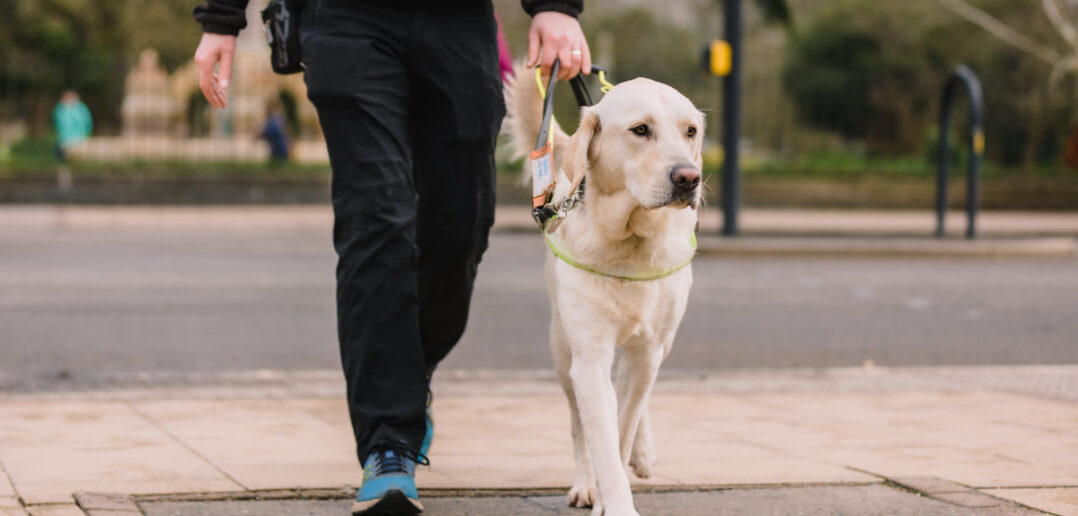Research conducted by charity Guide Dogs in May 2020 found:
- Just 22% of the general public would feel ‘completely comfortable’ offering to help someone with sight loss while social distancing measures were in place. Concerns included not knowing how to help from two metres away (50%) and being concerned about making physical contact (37%).
- Although 78% of adults in the UK understood that those with sight loss would face additional challenges while social distancing, 65% hadn’t considered this prior to taking the survey.
These concerns are valid – the support people with sight loss have previously relied on, such as sighted guiding which can involve taking someone’s elbow, is not compatible with social distancing. This has left people with sight loss concerned about accessing essential services such as supermarkets and public transport.
To help combat the increasing isolation felt by those with sight loss during lockdown, the charity have launched a campaign called ‘Be There’, which gives guidance to encourage the public to feel confident in their ability to offer support whilst maintaining social distancing. Here are their top 3 tips:
1. Keep your distance, but don’t disappear
People with sight loss may find it challenging to social distance, so if you see someone with a guide dog or a long cane then you can help them by making sure you keep 2m away, but that doesn’t mean you can’t also offer your help.
As guide dog owner Louis Moorhouse, 18, says: “My guide dog Kizzy hasn’t been trained to social distance, that’s why we need help from the sighted public. If you see us coming towards you, please don’t be offended that we might not be observing the two metre rule or attempting to stop – we just don’t know that you are nearby so you have to do the social distancing for us if you can. If we don’t acknowledge that, please know that we are still grateful, we might just not know what action you have taken to help keep us safe – feel free to let us know you are there!”
2. Say hello and offer your help
Simply by letting someone with sight loss know you are nearby, you are giving them the opportunity to ask for any help if they need it. People often feel unsure about their ability to help someone with sight loss, but their request could be a simple as finding out where a shopping queue starts, or if there is a safer place to cross a road.
Anne Ruddock, 69 from North Yorkshire says: “It can be really challenging at the best of times when you can’t see what’s going on around you. At the moment, it’s vital that I get more verbal information from people around me, as a lot of the environment around us is built on visual cues, which I can’t rely on. By saying ‘hello’ and offering some extra help could make the world of difference.”
3. Describe the scene
We’ve all had to adapt to unusual sights during lockdown – people standing apart in long lines outside of supermarkets, for example. But those with sight loss haven’t always witnessed this to the same extent, which can be isolating and confusing. By describing what you can see to someone with sight loss, you can help them to understand the environment and navigate accordingly.
Guide dog owner Jonathan Attenborough explains, “I don’t always know there is a queue because my dog Sammy takes me to the door of the shop, not the end of the queue. Shops have introduced visual indicators and one-way systems and if you can’t see they’re a major challenge.”


